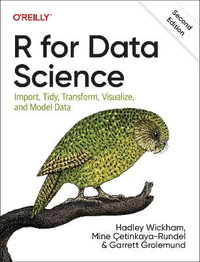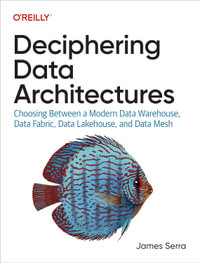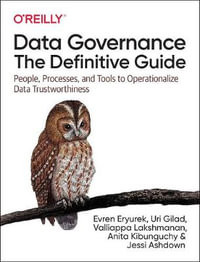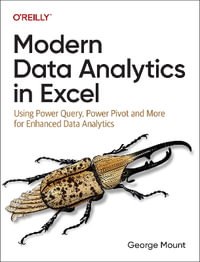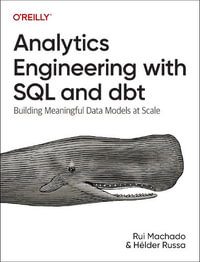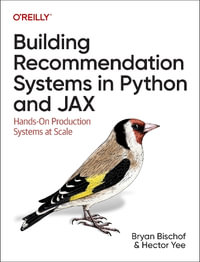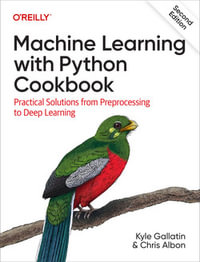| List of Tables | p. xi |
| List of Figures | p. xv |
| List of Algorithms | p. xxiii |
| Introduction | p. xxv |
| Simulating Evolution: Basics about Genetic Algorithms | p. 1 |
| The Evolution of Evolutionary Computation | p. 1 |
| The Basics of Genetic Algorithms | p. 2 |
| Biological Terminology | p. 3 |
| Genetic Operators | p. 6 |
| Models for Parent Selection | p. 6 |
| Recombination (Crossover) | p. 7 |
| Mutation | p. 9 |
| Replacement Schemes | p. 9 |
| Problem Representation | p. 10 |
| Binary Representation | p. 11 |
| Adjacency Representation | p. 12 |
| Path Representation | p. 13 |
| Other Representations for Combinatorial Optimization Problems | p. 13 |
| Problem Representations for Real-Valued Encoding | p. 14 |
| GA Theory: Schemata and Building Blocks | p. 14 |
| Parallel Genetic Algorithms | p. 17 |
| Global Parallelization | p. 18 |
| Coarse-Grained Parallel GAs | p. 19 |
| Fine-Grained Parallel GAs | p. 20 |
| Migration | p. 21 |
| The Interplay of Genetic Operators | p. 22 |
| Bibliographic Remarks | p. 23 |
| Evolving Programs: Genetic Programming | p. 25 |
| Introduction: Main Ideas and Historical Background | p. 26 |
| Chromosome Representation | p. 28 |
| Hierarchical Labeled Structure Trees | p. 28 |
| Automatically Defined Functions and Modular Genetic Programming | p. 35 |
| Other Representations | p. 36 |
| Basic Steps of the GP-Based Problem Solving Process | p. 37 |
| Preparatory Steps | p. 37 |
| Initialization | p. 39 |
| Breeding Populations of Programs | p. 39 |
| Process Termination and Results Designation | p. 41 |
| Typical Applications of Genetic Programming | p. 43 |
| Automated Learning of Multiplexer Functions | p. 43 |
| The Artificial Ant | p. 44 |
| Symbolic Regression | p. 46 |
| Other GP Applications | p. 49 |
| GP Schema Theories | p. 50 |
| Program Component GP Schemata | p. 51 |
| Rooted Tree GP Schema Theories | p. 52 |
| Exact GP Schema Theory | p. 54 |
| Summary | p. 59 |
| Current GP Challenges and Research Areas | p. 59 |
| Conclusion | p. 62 |
| Bibliographic Remarks | p. 62 |
| Problems and Success Factors | p. 65 |
| What Makes GAs and GP Unique among Intelligent Optimization Methods? | p. 65 |
| Stagnation and Premature Convergence | p. 66 |
| Preservation of Revelant Building Blocks | p. 69 |
| What Can Extended Selection Concepts Do to Avoid Premature Convergence? | p. 69 |
| Offspring Selection (OS) | p. 70 |
| The Revelant Alleles Preserving Genetic Algorithm (RAPGA) | p. 73 |
| Consequences Arising out of Offspring Selection and RAPGA | p. 76 |
| Sasegasa-More than the Sum of All Parts | p. 79 |
| The Interplay of Distributed Search and Systematic Recovery of Essential Genetic Information | p. 80 |
| Migration Revisited | p. 81 |
| Sasegasa: A Novel and Self-Adaptive Parallel Genetic Algorithm | p. 82 |
| The Core Algorithm | p. 83 |
| Interactions among Genetic Drift, Migration, and Self-Adaptive Selection Pressure | p. 86 |
| Analysis of Population Dynamics | p. 89 |
| Parent Analysis | p. 89 |
| Genetic Diversity | p. 90 |
| In Single-Population GAs | p. 90 |
| In Multi-Population GAs | p. 91 |
| Application Examples | p. 92 |
| Characteristics of Offspring Selection and the RAPGA | p. 97 |
| Introduction | p. 97 |
| Building Block Analysis for Standard GAs | p. 98 |
| Building Block Analysis for GAs Using Offspring Selection | p. 103 |
| Building Block Analysis for the Relevant Alleles Preserving GA (RAPGA) | p. 113 |
| Combinatorial Optimization: Route Planning | p. 121 |
| The Traveling Salesman Problem | p. 121 |
| Problem Statement and Solution Methodology | p. 122 |
| Review of Approximation Algorithms and Heuristics | p. 125 |
| Multiple Traveling Salesman Problems | p. 130 |
| Genetic Algorithm Approaches | p. 130 |
| The Capacitated Vehicle Routing Problem | p. 139 |
| Problem Statement and Solution Methodology | p. 140 |
| Genetic Algorithm Approaches | p. 147 |
| Evolutionary System Identification | p. 157 |
| Data-Based Modeling and System Identification | p. 157 |
| Basics | p. 157 |
| An Example | p. 159 |
| The Basic Steps in System Identification | p. 166 |
| Data-Based Modeling Using Genetic Programming | p. 169 |
| GP-Based System Identification in HeuristicLab | p. 170 |
| Introduction | p. 170 |
| Problem Representation | p. 171 |
| The Functions and Terminals Basis | p. 173 |
| Solution Representation | p. 178 |
| Solution Evaluation | p. 182 |
| Local Adaption Embedded in Global Optimization | p. 188 |
| Parameter Optimization | p. 189 |
| Pruning | p. 192 |
| Similarity Measures for Solution Candidates | p. 197 |
| Evaluation-Based Similarity Measures | p. 199 |
| Structural Similarity Measures | p. 201 |
| Applications of Genetic Algorithms: Combinatorial Optimization | p. 207 |
| The Traveling Salesman Problem | p. 208 |
| Performance Increase of Results of Different Crossover Operators by Means of Offspring Selection | p. 208 |
| Scalability of Global Solution Quality by SASEGASA | p. 210 |
| Comparison of the SASEGASA to the Island-Model Coarse-Grained Parallel GA | p. 214 |
| Genetic Diversity Analysis for the Different GA Types | p. 217 |
| Capacitated Vehicle Routing | p. 221 |
| Results Achieved Using Standard Genetic Algorithms | p. 222 |
| Results Achieved Using Standard Genetic Algorithms with Offspring Selection | p. 226 |
| Data-Based Modeling with Genetic Programming | p. 235 |
| Time Series Analysis | p. 235 |
| Time Series Specific Evaluation | p. 236 |
| Application Example: Design of Virtual Sensors for Emissions of Diesel Engines | p. 237 |
| Classification | p. 251 |
| Introduction | p. 251 |
| Real-Valued Classification with Genetic Programming | p. 251 |
| Analyzing Classifiers | p. 252 |
| Classification Specific Evaluation in GP | p. 258 |
| Application Example: Medical Data Analysis | p. 263 |
| Genetic Propagation | p. 285 |
| Test Setup | p. 285 |
| Test Results | p. 286 |
| Summary | p. 288 |
| Additional Tests Using Random Parent Selection | p. 289 |
| Single Population Diversity Analysis | p. 292 |
| GP Test Strategies | p. 292 |
| Test Results | p. 293 |
| Conclusion | p. 297 |
| Multi-Population Diversity Analysis | p. 300 |
| GP Test Strategies | p. 300 |
| Test Results | p. 301 |
| Discussion | p. 303 |
| Code Bloat, Pruning, and Population Diversity | p. 306 |
| Introduction | p. 306 |
| Test Strategies | p. 307 |
| Test Results | p. 309 |
| Conclusion | p. 318 |
| Conclusion and Outlook | p. 321 |
| Symbols and Abbreviations | p. 325 |
| References | p. 327 |
| Index | p. 359 |
| Table of Contents provided by Ingram. All Rights Reserved. |





